A Trilogy of Papers: A Framework for Considering the Existence of God and the Universe
Section 1:
The Marble Exercise
John L. Ronsvalle
Sylvia Ronsvalle
empty tomb, inc.
Champaign, Illinois
copyright, empty tomb, inc., 1989, 2002
Now, let us turn our attention to what we call
The Marble Exercise
Please observe this marble briefly. [Pass around a black marble].
As a first task, out of nothing, using no existing marbles nor any other material of any sort, kindly take seven seconds to make an exact duplicate of this marble.
Next, again take seven seconds, and, this time, out of nothing, make an exact duplicate of yourself.
This leads to the rhetorical question of whether it was easier to reach success with one task compared to the other? It would seem that both were rather impossible.
Now, if you will, sit back in a comfortable position, tighten your hands into a fist and then open them-a couple of times, let your muscles become loose and please close your eyes now for the second part of this exercise. This exercise will call upon your powers of imagination.
To begin with, imagine that you are about to be transformed into a space-time traveler who can-inconceivably faster than the speed of light-instantaneously move freely through the dimensions of space and time. You are on earth in the present time. With your eyes closed, visualize that you are receiving a briefing on the first part of your journey. Image a setting on earth in which you are receiving the travel plans in preparation for departure within the hour.
You are being informed that you are to begin with your journey over space. The route you will take is along 16 places. Do not be concerned as to whether or not you can remember what each of the space travel markers looked like, since you will be on autopilot. However, visualize what they look like as best you can so they can serve to help you experience the space travel.
Just before you leave you are being handed a small, thin, lightweight backpack-type apparatus containing everything you will need during the journey. Do not bother to open the kit since, as part of its lightweight nature, everything will be invisible until the time you need it. You are being assisted as you put on the backpack.
The backpack radiates a curvilinear energy field which constitutes an unobtrusive envelope for complete life-support and information-access. Designed into the backpack is a fantastic, perpetual-storage, light-and-unknown-dark-matter-transmogrifying, intergalactic, transuniversal propulsion system featuring an automatic navigational arrangement accompanied by a synergistically-integrated override which is highly responsive to your telepathically transmitted directions.
OK. You have been asked to move outside to the launch area. It’s a lovely, clear, warm day. You are now being informed that departure is imminent. In fact you have just been notified that the countdown has begun. Five, four, three, two, one-you sense yourself beginning to lift off from the ground accompanied by a pleasant feeling of well-being. Within moments, the people, vehicles, buildings and identifiable landscape are receding into the distance. Once above the cloud cover, at an accelerating speed, you swiftly approach the Moon. Passing beyond it, you look back at Earth above the Moon.
(Click on any thumbnail image to view it at a larger size).

Soaring quickly and safely through the solar system, you pass by the Moon of Jupiter…
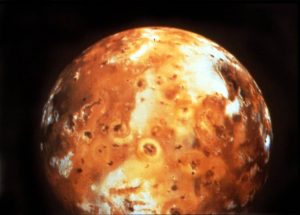
and the spectacular rings of Saturn.
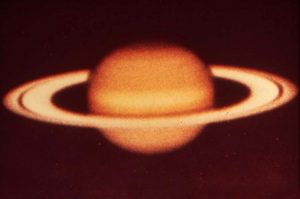
Now moving out of the solar system, but remaining within our Milky Way Galaxy, you come upon the Orion Nebula, 1,500 light-years away from Earth.

Then as a thoughtful reminder of home, your Triple A, i.e., American Aeronautical Association, Intergalactic Triptik has been plotted so that you pass the North American Nebula,1 6-7,000 light-years away.

At once, you notice CASA, that is, Supernova Cassiopeia A,2 at 10,000 light-years.
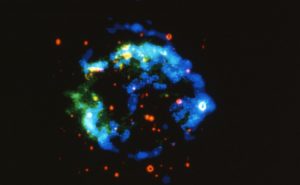
Next, leaving our galaxy, you move within a loosely bound cluster of some 20 galaxies, called the Local Group.3 It is here, 160,000 light-years out, that you approach the Large Magellanic Cloud, the closest galaxy outside the Milky Way; it is smaller than the Milky Way-sort of a satellite galaxy.

Soon after, you draw near to the Andromeda Galaxy,4 a close neighbor and twin to the Milky Way, 2 million light-years away.

Hurtling out of the Local Group, at 13 million light-years, you identify the Centaurus Galaxy within our Local Supercluster.5
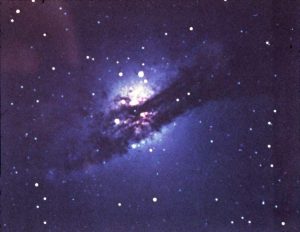
Speeding out of our Local Supercluster into more distant areas of the Known Universe, you pass the Hercules Supercluster of Galaxies6 at 570.5 million light-years from Earth.

Rocketing 1.5 billion light-years out still further toward the deep void, you can easily note Radio Galaxy 3C 236,7 the largest object in the observable universe at 20 million light-years across.
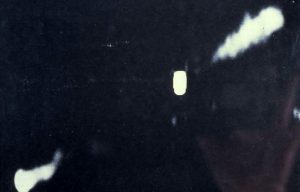
While turning to glance back at this immense object, out of the side of your eye, you catch sight of Radio Galaxy NGC 6251,8 approaching fast on the starboard side of your flight path.

After your visit among the radio galaxies you have the treat of rushing toward quasars, the most distant observable objects. These quasi-stellar objects are curious in that they emit the energy of hundreds of galaxies from a volume far smaller than our Milky Way. The most distant quasars are rushing away from Earth at more than 90 percent of the speed of light.9
However, picking up steam, moving at warp speeds unimaginably faster than the speed of light, you flash by quasi-stellar objects 3C: 273, 48, 147 and 19610…

continuing out to quasi-stellar object PKS 2000-330,11 one of the more distant observable entities in the universe.
Here, you pause for a brief moment-take a deep breath-and advance out of the Known Universe, beyond the beginning of time as we know it, into the outer darkness. You now begin really to appreciate your speed capabilities since your present sense of exhilarating acceleration makes it feel as though you have been coasting up to this point.
You think to look backward and already the whole universe is the size of a large summer moon . . . an instant later, no bigger than a good-sized Florida orange . . . now the size of a golf ball . . . and a moment later, it is a mere pinprick of light-in appearance at least, perhaps the size-smaller than a grain of sand-which it is theorized was the source of the universe some 14 billion years ago.
Suddenly, the universe is out of sight, with only total darkness in all directions. Again, time for a brief pause. You recall the earlier information you received. There was something about moving freely through the dimensions of space and time. Time.
Now you sense yourself beginning to move backwards in time. You presently see a light appearing. It looks vaguely familiar. At first, it grows very large as you draw closer. It’s the observable universe. Only now it’s shrinking. In an instant you have traveled backwards 14 billion years to the time of the Big Bang. Now you continue on and everything is completely dark again. Speeding backwards, it is now 100 billion years ago; now a trillion years ago; now you slow down to a stop at 100 trillion years ago.
At this point, you notice some light emanating-it seems as though from below your chin. Looking down, you see a button-like portion of your backpack strap. You reach over and push the wedge-shaped button which is flashing the word, “PUSH.” At this point curvilinear rays beam from your backpack and a message appears on a screen which has been projected holographically at a distance six feet in front of you. The message reads:
“As a first task, limited by the very same constraints of reality you were faced with in making the marble before your present excursion-out of absolutely nothing, using no existing energy, nor any matter of any sort, and not by imagination, but in reality, taking seven seconds-actually make a universe.”
Then, as you suspect, having had difficulty with making a spherical, vaguely marble-shaped universe, a second message shimmers on the luminescent screen. It reads:
“Again, taking seven seconds-out of nothing-make God.”
At the end of seven seconds, the autopilot kicks in and you realize you are pressing forward in time. Soon the pinpoint of light comprising the Big Bang appears. Some fourteen billion years later, you find yourself at the old familiar spacemark on the edge of the known universe, quasi-stellar object PKS 2000-330.
Breathing a sigh of relief, you hear a voice asking you to open your eyes.
Opening your eyes, you see yourself hurtling back across the observable universe.













You feel yourself deaccelerating as you enter the solar system.
You see that you are gathered with others in a room at your starting point on earth, and you find, much to your dismay-given the relative excitement of space and time travel-that a reflective lecture on philosophy and theology is on the docket. However, you are somewhat, if only slightly, enheartened upon being informed that a discussion time is scheduled immediately following the lecture.
by John Ronsvalle and Sylvia Ronsvalle
The National Money for Missions Program
empty tomb, inc.
Champaign, IL
November 13, 1989
Minor revision 8/01/2002
The title of the lecture is “A Treatise on the Irrationality of the Existence of God and the Universe.” The poet Swinburne penned the lines . . .